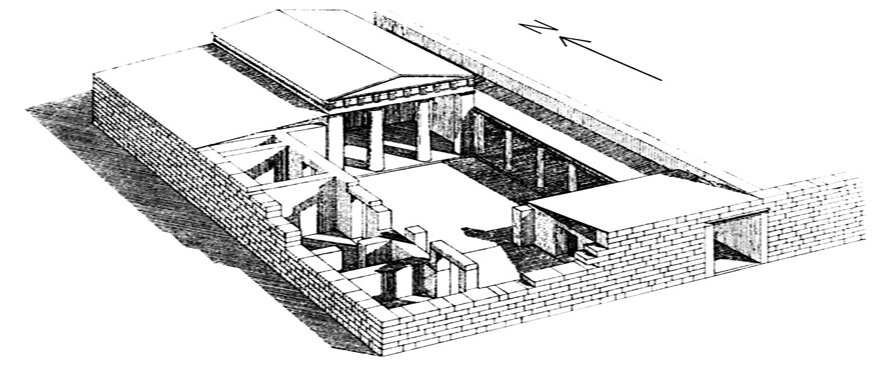6,000 Years of Solar: Solar Design in Ancient Greece
“6,000 Years of Solar” is a series about the history of solar energy technology drawn from John Perlin’s new book Let It Shine: The 6,000-Year Story of Solar Energy. The series profiles the fascinating people, from ancient Greece and China to late 19th century New York to today, who have made the present day solar revolution possible.
Never in the history of the world has there been such a high-ranking member of society to advocate passive solar architecture than Socrates. He felt so strongly for building with the sun in mind that he even set up a class to teach his acolytes how the finer points of putting up a passive solar house.
Socrates began the course by asking, “When someone wishes to build the proper house, must he make it as pleasant to live in and as useful as it can be? And is it not pleasant to have the house cool in summer and warm in winter?” the sage continued. “Now in houses with a southern orientation, the sun’s rays penetrate into the porticoes [covered porches], but in summer the path of the sun is right over our heads and above the roof, so we have shade.” Therefore, Socrates concluded, it is in such a designed house “that the owner can find a pleasant retreat in all seasons . . . which makes the house at once the most useful and most beautiful.”Archaeology shows that people throughout the Greek world heeded Socrates’s advice. The attempts at first were modest: the remodeling of two houses in downtown Athens where workmen changed the arrangement of rooms so that the most important ones would face onto a south-facing courtyard. As word of the virtues of the new architecture spread, rural Athenians began to adopt solar architecture as well. Then the idea caught on with urban planners.The new city of Olynthus in northern Greece became the first solar city of ancient Greece. It had its streets so designed that every house could face south. After Olynthus, other cities followed, as far away as central Bulgaria. Even when the terrain made solar planning difficult, builders found a way. The great playwright Aeschylus suggested that a south-facing orientation was a normal characteristic of Greek houses. It was a sign of a “modern” choice, he declared, as opposed to houses built by primitives and barbarians, who, in the words of Aeschylus, “though they had eyes to see, they saw to no avail; they had ears, but understood not. But like shapes in dreams, throughout their time, without purpose wrought all things in confusion. They lacked knowledge of houses turned to face the sun, dwelling like swarming ants in sunless cavities.”This post, summarizing Chapter 2 of the author’s Let It Shine: The 6,000-Year Story of Solar Energy, was published on December 11, 2013 on the Renewable Energy blog of Mother Earth News.
Read the Entire “6,000 Years of Solar” Series:
John Perlin is an analyst in the physics department of the University of California, Santa Barbara and is a former CEC Staffer. He oversees solar installations at the university, and he writes, speaks, and lectures about solar energy.
